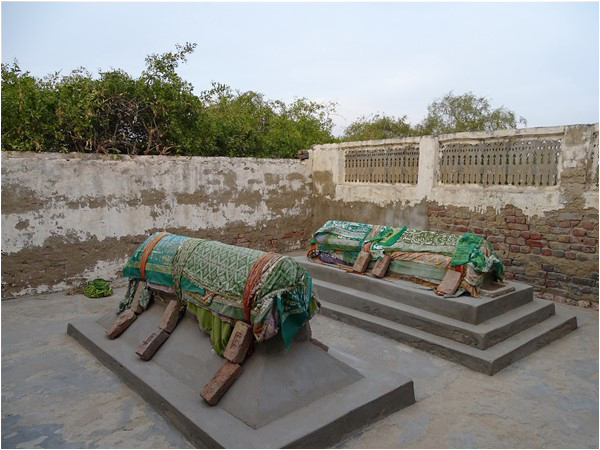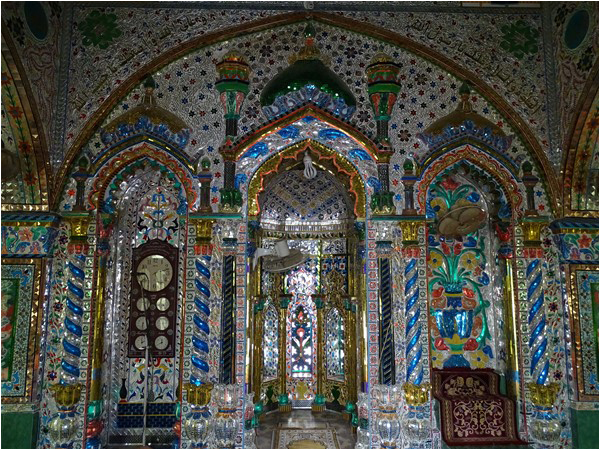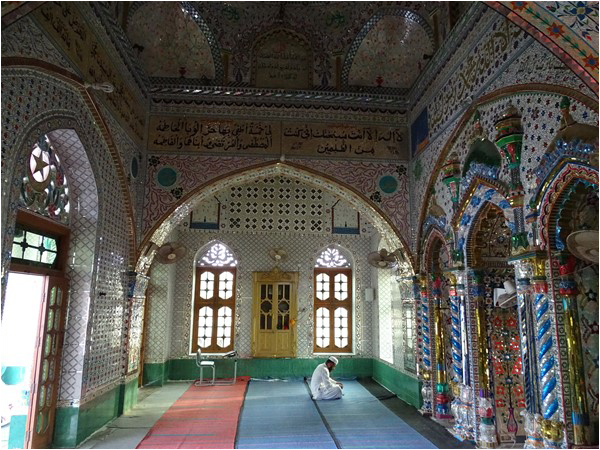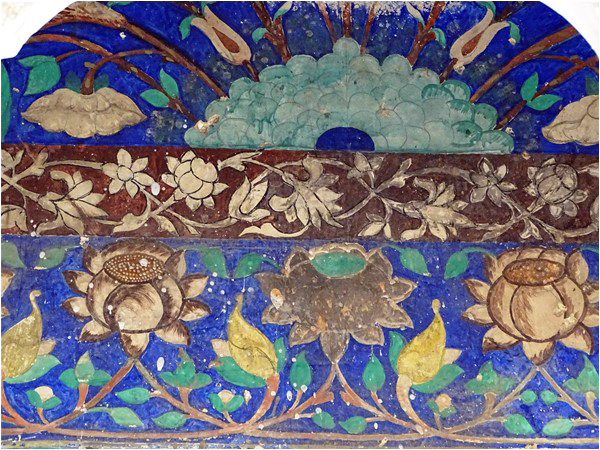
In Tharparkar, Badin, Tando Muhammad Khan and many other districts of Sindh, one hears the names and tales of many brave women.
Zulfiqar Ali Kalhoro
Sindh is a land of Sufis, saints, mystics, myths, mysteries and heroes (soorma). Many tales of generosity and bravery of men are narrated by roving minstrels in different towns and villages of Sindh. But equally, there is a long list of generous, brave, patriotic and pious women whose names are still preserved in the memories of oral historians, poets and sometime even painted on walls of funerary monuments in Sindh.
In Tharparkar, Badin, Tando Muhammad Khan and many other districts of Sindh, one hears the names and tales of many brave women.
In Nagarparkar, in 1948, Mai Shori killed a police superintendent when the latter arrested her husband on false charges and refused to give him bail despite several pleas by Mai Shori. Some of the poets of Nagarparkar composed poetry on the bravery of Mai Shori – that in a male-dominated society nobody dared save and help her husband. She fought for her husband alone and eventually killed the police officer. In other villages of Tharparkar, I was told tales of the generosity of women. One such woman was Mai Maan Bai Jhinjhan, who was married to a Sameja noble of a village in Chachro taluka. Lend has it that one day Colonel Tyrwhitt, a British army officer, halted in the village of Mai Maan Bai, who served him and his soldiers lunch. Colonel Tyrwhitt was impressed by her generosity and asked if there was anything she needed. Mai Maan Bai asked that a tank/pond be dug in the village. Colonel Tyrwhitt ordered his men to dig a tar (tank) which came to be named after Mai Maan Bai as ‘Tar Mai Man Bai’ and is located 18 km east of Chachro taluka. Colonel Tyrwhitt also bestowed on her one hundred acres of land.

Some royal Kalhora and Talpur women earned accolades for their welfare works. Mai Jaman, wife of Mian Noor Muhammad Kalhoro (1719-1753) is believed to have excavated many wells and built mosques. Eight mosques of Mai Jaman which withstood the vagaries of weather are all located in Sanghar district. Mai Khairi, the mother of Mir Fateh Ali Khan Talpur, the founder of the Talpur dynasty in Sindh, also commissioned a few mosques which are located in Hyderabad and Nasarpur. Mai Chagli, the wife of Pahar Khan Burfat and the mother of Izzatyar Khan Burfat, an advisor to MianGhulam Shah Kalhoro (1757-1772), managed the affairs of Lasbela state when her husband died – until she was driven away by the Jam of Lasbela. She settled in Kotri where today both her own tomb and that of her son Malik Izzatyar are located.
The list of great Sindhi women is very long but here I tend to discuss the Jami mosque which is believed to have been built by Bibi Lal, a pious Syed women who devoted all her life to devotional activities – reciting the Holy Quran and offering prayers. She was an unmarried Sufi saint who always remained engrossed in worship. She used to go to the annual festival of Sajan Sawai once a year.

Like the pious Bibi Lal, there are many other Sindhi Sufi women whose names come first before any veneration of their male mentors – a phenomenon that sometimes transcends religious boundaries
The Jami mosque of Bibi Lal breaks the skylines of Dando town, which lies 15 km east of Tando Ghulam Hyder in the district of Tando Muhammad Khan. The mosque was built in 1957 as the inscription on the gate of the mosque bears both the name of the builder and date of the construction. Bibi Lal belongs to eminent Syed family of Dando. This family of Syeds produced many eminent Sufis; the most prominent is Sajan Sawai, whose shrine is located 6 km southeast of Dando town. Sajan Sawai was an eminent deputy (khalifa) of Makhdoom Nuh of Hala. The grave of Bibi Lal is a half a kilometer south of Sajan Sawai’s shrine at the graveyard of Pinio Kapri. Pinio Kapri was the grandson of Sajan Sawai, a claim which seems to be disputed as the term Kapri is associated with one of the Hindu renunciatory orders. It is likely that he was later converted by Sajan Sawai and enrolled as his disciple. According to a popular hagiography of Pinio Kapri, he seemed to have engaged in many religious discourses with Hindu holy men – Swami Baba Ram, Swami Baba Narain Das and others, reflecting a syncretic tinge in the story. I will discuss this story of Pinio Kapri and Hindu ascetics in another article.
Bibi Lal died at the age of 65 and was buried near the tomb of Pinio Kapri. The grave of Bibi Lal lies northeast of the tomb of Pinio Kapri. The grave exists inside the wall enclosure. There are two graves in the wall enclosure, in fact. As one enters the enclosure, one can see her grave on the right, which is venerated by both men and women of the area.

The Jamia mosque of Bibi Lal is a three-domed structure with four minarets rising from the thick walls. The main gate of the mosque, which is decorated with painting and inscriptions, opens to a courtyard. The three arched-entrance of the mosque opens to an antechamber further leading to the main prayer hall. The prayer hall is divided into a nave and aisles that are spanned with hemispherical domes. This is one of the most impressive and splendid mosques in the whole district of Tando Muhammad Khan. Formerly, the façade of mosque was decorated with glazed blue tiles from Hala and Nasarpur. The interior of the mosque was adorned with floral and geometric designs. All this is gone now, as the mosque was renovated in 2008. Now, china ceramics and glasswork decorate the exterior partially. The interior of the mosque completely decorated with glasswork
In the male dominated society of Pakistan in general and Sindh in particular, where a woman’s voice is almost always left unheard, these monuments speak volumes of the richness of our history. Like the pious Bibi Lal, there are many other Sindhi Sufi women whose names come first before any veneration of their male mentors – a phenomenon that sometimes transcends religious boundaries.
Mai Noori, an “untouchable” woman of the Hindu Shikari caste, was a very dear disciple of Rajsen Soomrani, a Suhrawardi saint in Nindo, Badin. It is still obligatory for Hindu Rabari devotees and Muslim disciples to first pay salutations to Mai Noori and then to her mentor Rajsen Soomrani.
Mai Bhambi was another Muslim woman who became an eminent disciple of Jarkas Dinani, a Suhrawardi saint, whose shrine lies 4 km from Pangrio in Golarchi taluka. We must mention here also Mai Kuni, who was a female disciple of Ram Jago in Umarkot district – whose shrine lies 2 km south of Ram Jago’s shrine.
And so, associated with these monuments, the names of Bibi Lal and many other Sindhi Sufi women still live on in monuments, memories and poetry of the mystics of Sindh.
______________________
 The author is an anthropologist and the head of the department of Development Studies at the Pakistan Institute of Development Economics (PIDE), Islamabad
The author is an anthropologist and the head of the department of Development Studies at the Pakistan Institute of Development Economics (PIDE), Islamabad
Courtesy: The Friday Times Lahore